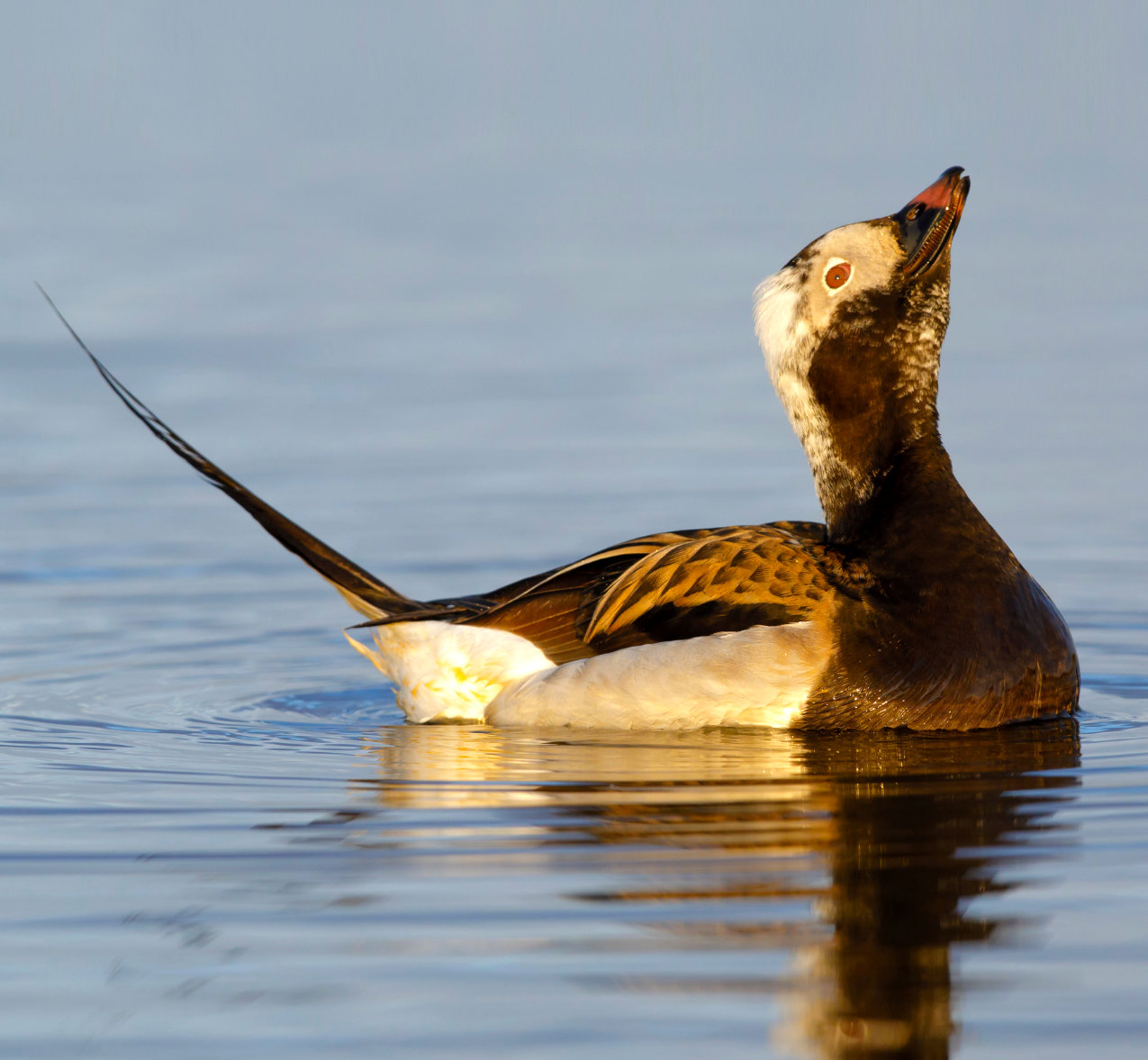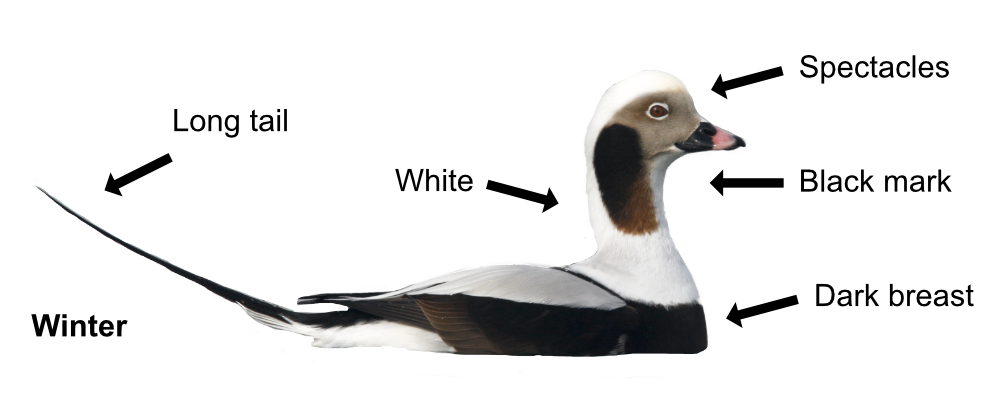
The Long-tailed Duck is another winter visitor to our northern coasts, arriving from their Arctic breeding grounds in the autumn. They are a beautiful sight in their large flocks, swimming high in the water on a stormy winter sea. They like a bit of rough. The Long-tailed Duck ought to be called the singing duck as it is so noisy with its yodelling "ah-oo-ah" call.
They are small, neat sea ducks with small round heads and steep foreheads. The male is unusual in having three distinct plumages through the year. In winter, he is a bit art deco in style, being mainly white with a dark breast, a black cheek mark and 'spectacles'. In summer, he is a mirror image with brown on his back, neck and head, white sides and a white face. In autumn, he is a dull brown all over but keeps his white face. He has a long black tail (hence their name) and a pink and black bill. The female is duller with a brown body, pale face and a dark mascara smudge on her cheeks. Youngsters resemble mum, though with a lighter, less distinct cheek patch. In flight, they show all dark wings and white bellies. The male has a brown 'Y' mark on his back.

The Long-tailed Duck feeds on crabs and shellfish caught underwater, generally close to the surface though they can dive to depths of up to 60m! They will also eat mussels, cockles, clams, small fish and plants.

Their elaborate courtship happens in the winter flocks and pairs form. The male approaches the female with an upright (long!) tail and with his bill a few inches from the water. A lot of noisy head bowing follows until she eventually gives in. Long-tailed Ducks do not breed here but on the Arctic tundra, in small groups close to lakes. They wait until the spring thaw in May before moving north. Mum makes a small bowl-shaped nest amongst the rocks and plants. She incubates the 6-9 eggs which hatch after 24 days. Dad goes off to moult into his duller autumn plumage. The youngsters mature quickly and can fly 35 days later. Although they can feed themselves, mum and dad help by stirring up food for them and showing them how to dive. Youngsters are vulnerable to predators and only 10% make it to adulthood. Mum does her own moult before they all fly south for winter.
The most important wintering area for Long-tailed Ducks is the Baltic Sea, where a total of about 4.5 million gather. Only about 14,000 come to our coasts, arriving here from October. Being sea ducks, their biggest threat is oil pollution. They live for an average of 15 years although some can live for as long as 20 years if food is abundant.
Their Latin name is 'clangula hyemalis' where 'clangula' is Latin for 'to resound' as they make so much noise and 'hyemalis' means 'of winter' which is when we see them. A noisy winter duck. In North America they are sometime called 'oldsquaws' though the name is falling out of favour as it upsets the Native Americans.